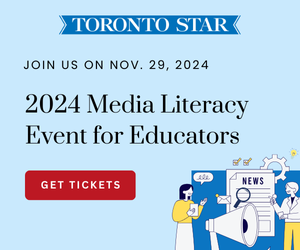Scotland has voted to remain part of the United Kingdom (UK).
The United Kingdom is short for the “United Kingdom of Great Britain and Northern Ireland.” It is made up of four countries: England, Wales, Northern Ireland and Scotland.
Last Thursday (Sept. 18), the people of Scotland took a vote (called a “referendum”) to decide whether they would stay as part of the UK or become an independent country.
The “No” vote won—meaning, they decided not to become independent.
About 55 per cent of the voters voted “no” and about 45 per cent voted “yes.” Voter turnout was high—nearly 85 per cent. (That means that 85 per cent of all people who were allowed to vote, did.)
Nearly 3,620,000 votes were cast.
For the referendum, people as young as 16 years old were allowed to vote. Scotland’s First Minister, Alex Salmond, said the voting age should be permanently lowered to 16 from now on.
According to the BBC, the first minister said “the case for 16- and 17-year-olds being allowed to vote in all UK elections… was overwhelming and unanswerable.”
The Queen of England was said to be very happy about the decision made by the Scottish people. According to the British news service the BBC, the British Prime Minister, David Cameron, said he had “never heard someone so happy” as the Queen was about the vote to remain within the UK.
The Queen has not confirmed that she said that. Buckingham Palace issued a statement that said the Queen was “above politics,” according to the BBC.
Related links
Before the vote, TKN published this article about the Scottish referendum.
Read this TKN article to discover why Harry Potter author J. K. Rowling is likely pleased about the vote.
CURRICULUM CONNECTIONS
By Jonathan Tilly
Writing/Discussion Prompt
Voter turnout for the Scottish referendum was 84.6 per cent, according to Wikipedia. Compare that to the voter turnout for the Quebec independence referendum of 1995, which had voter turnout of 93.5 per cent, and Canada’s last federal election (2011), which had voter turnout of just 61 per cent. In the federal election before that (2008) just under 59 per cent of eligible voters voted.
On this page, you’ll find voter turnout numbers for Canadian federal elections and referendums:
http://www.elections.ca/content.aspx?dir=turn&document=index&lang=e§ion=ele
Scotland’s first minister said “the case for 16- and 17-year-olds being allowed to vote in all UK elections… was overwhelming and unanswerable.” What did he mean by this? What information in the story helps you come to that conclusion?
Reading Prompt: Point of View
Retell today’s story from the point of view of someone in favour of independence or unity.
How does that change the story?
Junior
Identify the point of view presented in texts, ask questions to identify missing or possible alternative points of view, and suggest some possible alternative perspectives (OME, Reading: 1.2).
Intermediate
Identify the point of view presented in texts, including increasingly complex or difficult texts; give evidence of any biases they may contain; and suggest other possible perspectives (OME, Reading: 1.2).
Language Feature: Compound Words
A compound word is a single word that is made by joining two words to create a new word. Today’s article includes several compound words, such as “overwhelm.” “Whelm” means “to cover” or “to engulf,” so “overwhelm” is a compound word describing the feeling of being covered over.
Circle both parts of each compound word in the list below:
afternoon, battleship, become, cowgirl, everyday, foxhole, goalpost, homework, keyboard, lunchroom, motorcycle, overtime, password, runaway.







